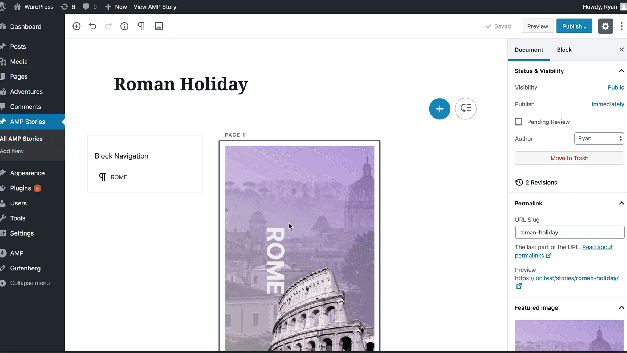Version 1.1 of the AMP Plugin for WordPress was released this week after four months in development and 125 merged pull requests from contributors. It includes CSS tree shaking improvements that restore AMP compatibility for WordPress’ default Twenty Nineteen theme, reducing the size of its stylesheet by 53%.
In an effort to get more users opting for the Native mode option, the plugin’s development team has rebranded the template modes:
In this release the Paired mode has been rebranded as Transitional mode. One reason for this is that the classic mode was also a paired mode (where there are separate parallel URLs for the AMP version). But more importantly, the goal for this mode is to help facilitate a transition a site to being AMP-first, where there is no separate AMP-specific URLs. So the goal of the Transitional mode is to be a path to Native mode.
The team has also decided to rebrand Classic mode to “Reader” mode, instead of deprecating it. It provides a basic AMP template for getting started that doesn’t necessarily match the site’s theme. Users can can add an “Exit Reader Mode” to the header of their sites with a setting in the Customizer.
Version 1.1 introduces compatibility with the PWA feature plugin, bringing support for the service worker to AMP pages. It extends the service worker to cache AMP CDN assets, images, and Google Fonts. Since the PWA feature plugin is still under active development, the service worker integration is still considered experimental.
Support for creating AMP Stories in WordPress is the next major feature coming to the plugin. A pre-release of the AMP Stories editor is available in 1.2 alpha 1, which also requires the latest version of the Gutenberg plugin. It uses the Gutenberg editor to allow users to build AMP stories with rich media capabilities.
A preview of the AMP Stories editor was unveiled at AMP Conf 2019 in Tokyo, Japan. Check out the video below to see Alberto Medina give a quick demonstration of how it will work in the upcoming version 1.2 of the AMP for WordPress plugin.
[youtube https://www.youtube.com/watch?v=4mavA1xow1M?version=3&rel=1&fs=1&autohide=2&showsearch=0&showinfo=1&iv_load_policy=1&wmode=transparent&w=627&h=353]





